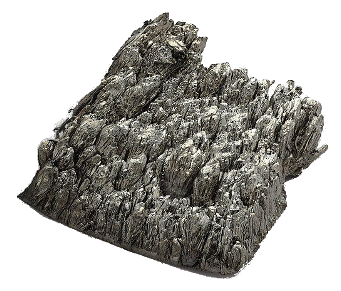Joshua Learn of S&P Global Market Intelligence reports that a rare earth exploration company has signed a memorandum of understanding with a Pennsylvania coal company to extract byproducts from coal ash and overburden for use in the aluminium industry.
“Texas Mineral Resources (TMRC) announced that the agreement gives the company six months to evaluate whether it could finance, recover and produce scandium, sometimes classified as a rare earth element, and other rare earths from coal ash and in-situ coal bed overburden.”
“We are truly excited to potentially have the ability to help the coal community and possibly supply the auto and aviation industry with a major source of scandium to better engineer their products,” TMRC chairman Anthony Marchese told S&P Global Market Intelligence.
Marchese said testing revealed that the coal overburden yielded more scandium than coal ash and that the element can be extracted from overburden using an organic solvent.
A press release estimated that extracting scandium from the ash and overburden would require an estimated $17 million, which would include a 25% contingency. The company estimates it can produce 7,500 kg/y of scandium oxide, which would yield a yearly $10.3 million at current market prices, assuming a recoverable grade of 45 ppm.
“Worldwide scandium production is limited and industry demand is growing,” Marchese said in a release. “Domestic manufacturers need a large and reliable source of scandium oxide.”
Marchese could not confirm which coal company the MOU had been signed with as a deal has not yet been signed other than to say it is a privately held in north central Pennsylvania. A press release stated that the area contained 3.7 Mst of coal ash, as well as undetermined amounts of in-situ overburden. Since the company already owns a permit for coal mining and processing, TMRC would only need an additional permit for processing scandium and rare earths. The company also has coal ash on site as it disposes of the waste byproduct leftover from the burning of coal at power plants, Marchese said.
The US Department of Energy announced funding for 10 different research projects in December 2015 to seek ways to extract rare earths from coal and the commodity’s byproducts. The DOE granted each project from around $600,000 to $1 million in funding. Another study the agency funded earlier is on the same property as the producer that signed an MOU with TMRC.
Sarma Pisupati, Chair of the energy engineering program at Pennsylvania State University and a co-author of study published in 2015 on separating rare earth elements from coal products, told S&P Global Market Intelligence that “almost 80% of [rare earth elements] could be extracted with the techniques that we employed, which were relatively inexpensive and environmentally safe.”
He added that not all coal overburden is created equally in terms of the rare earths it may yield since the overburden needs to have the right kind of shale.
Another recent study found that coal ash mined from the Appalachian Mountains could provide rare earth elements like neodymium, europium, terbium, dysprosium, yttrium and erbium — priority materials for clean energy development.
While scandium can be used in aluminium production to make stronger, lighter metal, some of the other rare earths have uses in clean energy production. “If we are going to use coal, we might as well get some of the materials that we need to support renewable energy from it,” Pisupati said, adding that he saw also saw the extraction of rare earths from coal byproducts as a positive thing.
Marchese says that while his company is principally interested in scandium as it is the easiest to sell on the market, TMRC will be on the lookout for other opportunities to extract and sell other rare earth elements, which are always present where there is scandium.
The technology to extract rare earth is not new necessarily, but he says his company will be the first to commercially extract scandium from coal ash or overburden in the U.S. “We want to develop something which benefits our company as well as the local community,” he said. “The coal industry has been taking such a hard hit recently, and there’s a lot of good that comes from coal.”











